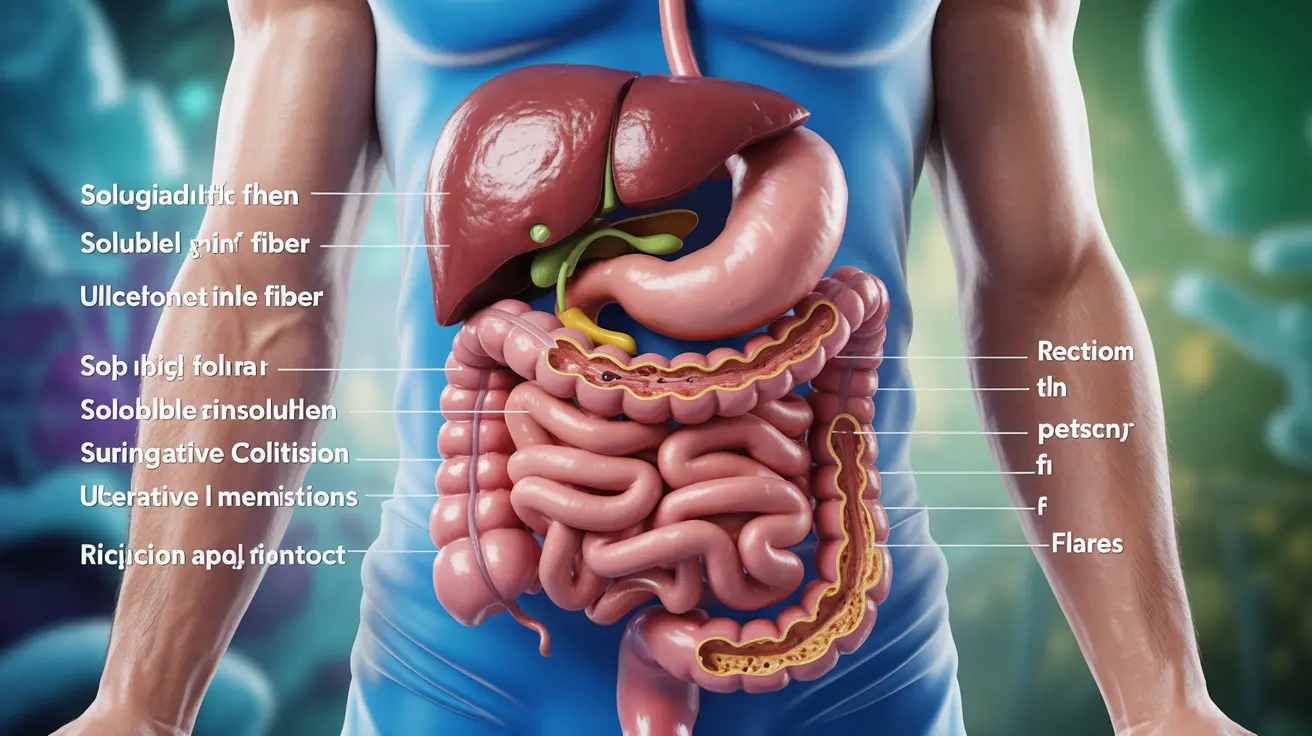Living with ulcerative colitis (UC) means carefully considering how different foods affect your digestive system, and fiber is often a topic of particular concern. While fiber is generally celebrated for its digestive health benefits, its role in ulcerative colitis management is more nuanced and requires a personalized approach.
Understanding how fiber affects UC symptoms, particularly during flares versus remission periods, is crucial for managing the condition effectively. This comprehensive guide will help you navigate the complex relationship between fiber and ulcerative colitis.
The Dual Nature of Fiber in Ulcerative Colitis
Fiber's impact on ulcerative colitis can vary significantly depending on the disease state and individual tolerance. During remission, some people may benefit from gradually increasing fiber intake, while others might need to maintain careful moderation even when symptoms are under control.
Different Types of Fiber and Their Effects
Understanding the two main types of fiber is essential for UC management:
- Soluble fiber: Dissolves in water and often proves gentler on the digestive system
- Insoluble fiber: Provides bulk but may be more challenging to tolerate during flares
Benefits of Fiber During Remission
When UC is in remission, fiber can offer several potential benefits:
- Promotes regular bowel movements
- Supports beneficial gut bacteria
- Helps maintain overall digestive health
- May contribute to longer remission periods
Managing Fiber During Flares
During active UC flares, fiber intake typically needs to be modified to prevent worsening symptoms. This doesn't necessarily mean eliminating fiber entirely, but rather making strategic adjustments to both type and amount.
Recommended Approaches During Flares
Consider these strategies when managing fiber during active UC:
- Choose low-fiber alternatives temporarily
- Focus on well-cooked, soft vegetables
- Avoid raw vegetables and tough, fibrous foods
- Consider soluble fiber sources that are easier to digest
Developing a Personalized Fiber Strategy
Creating an effective fiber strategy for UC management requires careful attention to individual responses and needs. Working with healthcare providers and keeping a detailed food diary can help identify optimal fiber intake levels.
Tips for Incorporating Fiber Safely
Follow these guidelines when adjusting fiber intake:
- Increase fiber gradually to avoid digestive distress
- Stay well-hydrated when consuming fiber
- Pay attention to individual tolerance levels
- Consider keeping a symptom journal to track responses
Frequently Asked Questions
Is fiber bad for ulcerative colitis, and how does it affect symptoms during flares versus remission?
Fiber isn't inherently "bad" for ulcerative colitis, but its effects vary depending on disease activity. During remission, moderate fiber intake can be beneficial for gut health. During flares, however, reducing fiber intake may help minimize symptoms and discomfort.
What are the benefits and risks of a high-fiber diet for managing ulcerative colitis?
Benefits include improved gut health, regular bowel movements, and potential support for maintaining remission. Risks include possible increased discomfort, bloating, and worsened symptoms if fiber intake is too high or introduced too quickly, especially during flares.
How can people with ulcerative colitis determine the best type of fiber to include in their diet?
Start with soluble fiber sources, which are typically better tolerated. Keep a food diary to track responses to different fiber sources, and work with a healthcare provider or dietitian to develop an individualized plan. Gradually introduce new fiber sources while monitoring symptoms.
What are some strategies for managing fiber intake during UC flares to minimize discomfort and risk?
During flares, reduce fiber intake temporarily, focus on well-cooked, soft foods, avoid raw vegetables and tough fibrous foods, and choose easily digestible options. Consider implementing a low-residue diet as recommended by your healthcare provider.
Can increasing dietary fiber help reduce the frequency of ulcerative colitis flares, and what other lifestyle changes might be beneficial?
While moderate fiber intake during remission may help maintain gut health, it's just one part of UC management. Other beneficial lifestyle changes include stress management, regular exercise, adequate sleep, staying hydrated, and avoiding known trigger foods. Always work with healthcare providers to develop a comprehensive management plan.




